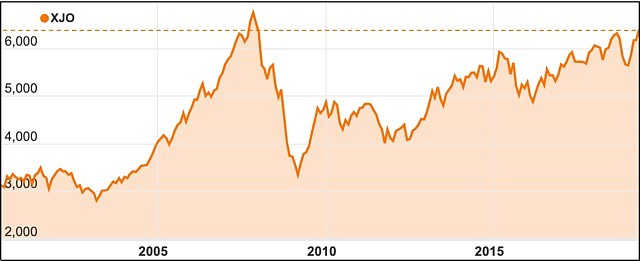Interest rates set for an inflation cut as dollar falls and stock market booms

The official cash rate has been stuck at 1.5% for 32 consecutive months and looks set to go lower.
Will official interest rates be cut just 11 days out from the election?
It is very much a live question after this week’s zero inflation reading for the first three months of the year made it virtually impossible for the Reserve Bank’s inflation target of at least 2% to be reached.
While the job market remains strong, super-low underlying inflation points to continuing weak consumer spending as well as a weakening economy with limited growth.
Certainly, markets believe that rate cuts are on the way – even if not in the May decision – with the Australian dollar continuing to fall to seven-week lows and the share market hitting a 11-year high.

The ASX 200 is climbing up towards pre-GFC highs.
Lower interest rates make the Australian dollar less attractive while helping to boost the share market, which offers higher returns than money on deposit.
Markets pricing in a rate cut
Financial markets are now pricing in a better than 60% chance of an official interest rate cut to 1.25% when the RBA board meets on 7 May. Some of the more bearish pundits are now saying there could be as many as three interest rate cuts this year now that annual core inflation of 1.4% is hitting 16-year lows.
Inflation has now been stuck below the RBA’s 2-3% target band for three years.
Politics plays a part
The RBA decision is highly political because any interest rate cut would undermine Prime Minister Scott Morrison’s claim of a strong economy and play into Opposition leader Bill Shorten’s contention that the economic growth is weakening and new solutions to boost wages are required.
In the past, the RBA has been known to make politically courageous decisions – during the 2007 election it lifted rates just a fortnight out from the election, causing a political hit to then Prime Minister Howard’s claim that he would keep interest rates low.
The RBA this time will likely wait until June to reassess the economy due to the still strong employment figures but there is no doubt that a possible 0.25% official interest rate cut to 1.25% will be on the RBA agenda from here on, as will further interest rate cuts should the jobs market weaken.
Lowe has been steady as she goes so far
Current RBA Governor Dr Philip Lowe has now presided over a steady 1.5% cash rate for two and a half years but in the minutes of the last RBA meeting it was revealed that the board would consider a cut in rates was “appropriate” if “inflation did not move any higher and unemployment trended up”.
We now know that inflation has not moved higher – if anything it has fallen due to one-off and temporary factors such as low petrol prices – and although official unemployment has remained low, there are some forward looking measures such as online employment vacancies which have fallen for three months that suggest the jobs market might be about to turn down.
That is where the RBA needs to make a judgement call – do they rely on the rock-solid numbers that show a strong jobs market or look at the leading indicators and decided that the jobs market is turning and decide to act now.
So far Dr Lowe has only had to keep the rudder completely straight but the rest of this year will really see him earn his salary as he attempts to anticipate what is happening in the Australian economy and move interest rates to maintain employment and activity.
